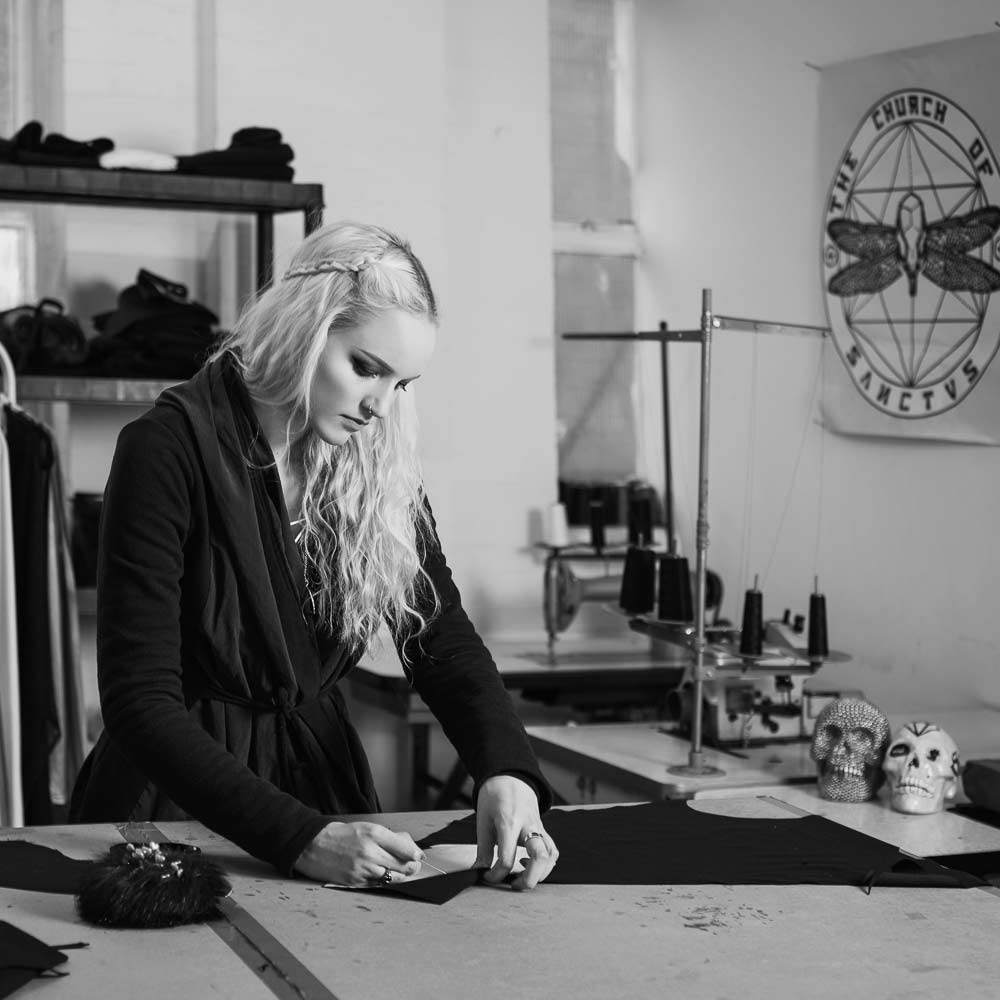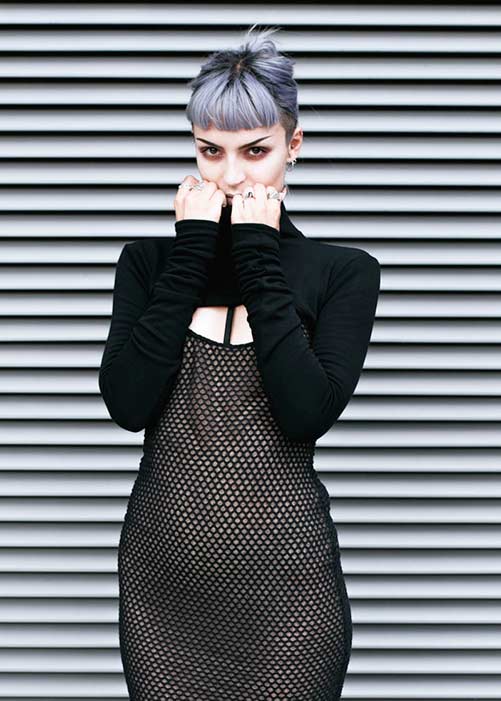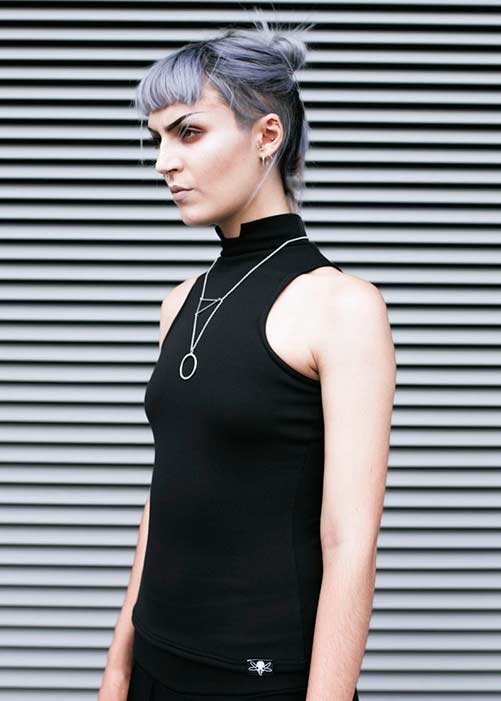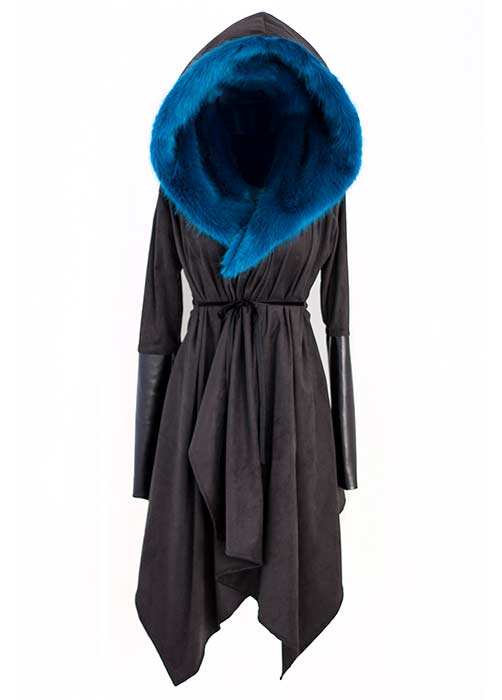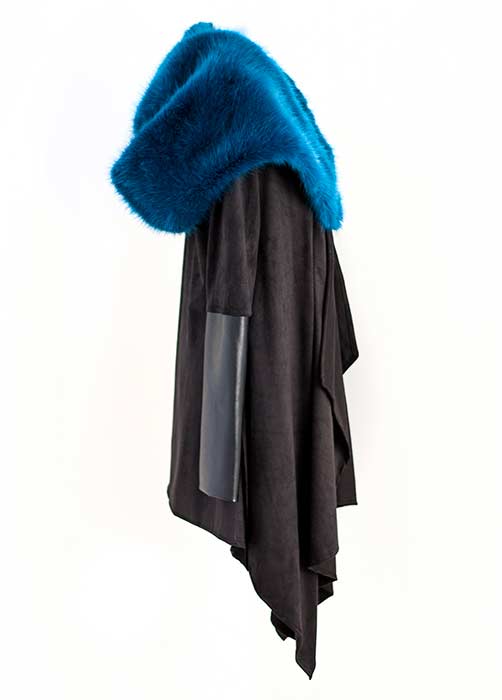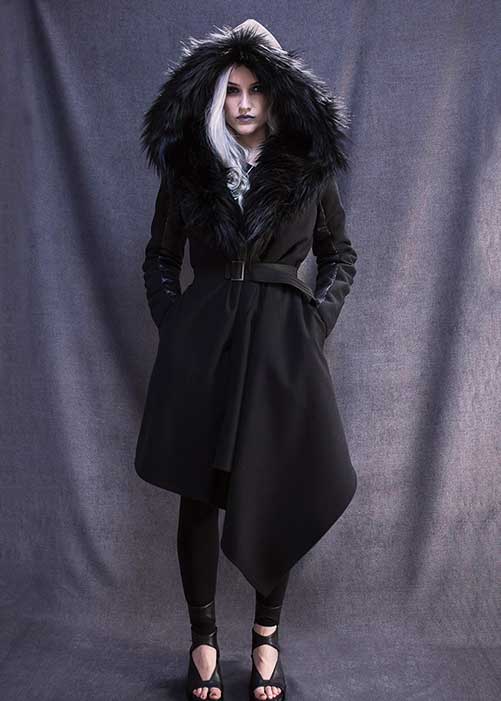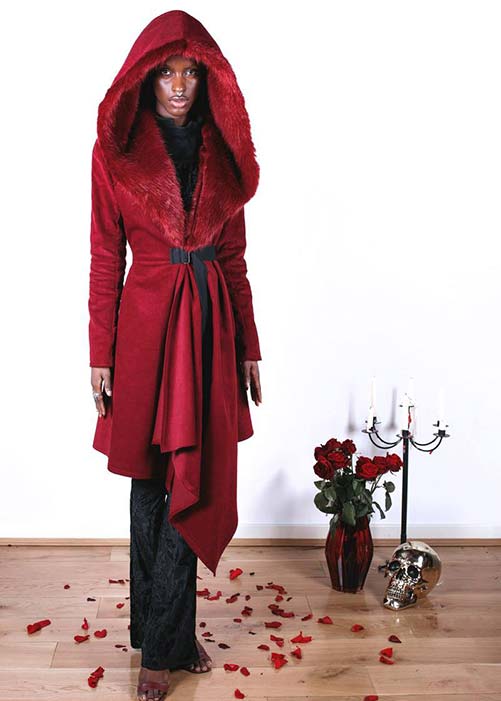As founder of Church of Sanctus, fashion designer Lucinda Sinclair lives the gospel of goth couture, slow fashion, and ethical design. Sanctus, which Lucinda founded in London in 2012, painstakingly handcrafts all their designs—all of which are cut from vegan-friendly materials and shipped in packaging made from 100% recycled (and recyclable) materials. Furthering the onus on ethics, Lucinda minimizes waste by sourcing roughly three-quarters of her fabrics from dead stock.
The good stewardship is all in service to exquisite style. Lucinda culls inspiration from symbolism, divine rituals and icons, and historical and mythical female figures to craft dramatic flowing trains, impeccably detailed coats, and striking silhouettes—all tailored with a degree of sophistication that transcends subculture. We chatted with Lucinda about striking the balance between wearability and high drama, what happens when someone rips off your design, and diversifying the world of gothic fashion.
Did you study fashion design? If so, how valuable was the experience?
I did an Art Foundation and a Bachelor’s Degree in Fashion Design. I found both courses enormously helpful, despite the latter leaning toward the more commercial side of fashion, but hey—you have to rebel against something. I know a degree is not a requirement in the creative industries, so I feel lucky to be doing a job that calls for me to use all the practical skills I learned at university pretty much every day. For me, studying was worth doing, but I realize it’s not for everyone.

Yen wears Renaissance Trousers and the Priestess Top from Lucinda’s Forgotten Apostles collection. COURTESY OF CHURCH OF SANCTUS.
Can you tell me a bit about your inspiration? I saw on social media you cite everything from old Tim Burton magazine shoots to H.R. Giger LP art. And your Matilda gown is named for Matilda Chaplin, one of the pioneering Edinburgh Seven. Are there any designers, either contemporary or historical, you’re particularly fond of?
My main inspirations are the many ways in which we connect to a higher force in the universe, be that ritual, icons, religion, and so on. Often I’ll find a muse—a particularly willful woman in history or myth—and find that inspiration comes easily when you’re designing for a feminine deity or warrior. However, on the more practical side, I’m a diehard McQueen fan; nothing really comes close for me in terms of his creativity and cutting.
I’ve seen you mention striving for “comfortable, striking yet wearable,” while also creating some dramatic, “wonderfully impractical for daily wear” designs. How do you decide when to let loose?
Initially, when I started Church of Sanctus in 2012, I wanted to make gothic clothing that was “fashion” enough to step outside the realm of subculture. My intent was to offer something different from what was available on the high street, but I knew in order to compete with it, the designs still needed to be wearable enough to have longevity in people’s wardrobes. Slow fashion can feel like much more of an investment due to its price point, and I want customers to feel their money has been spent wisely. However, in each collection I do like to make at least one piece where I disregarded all that and just make something that’s really fun to design and to wear, with no other purpose than gothic drama and indulgence.
- Immaculate Cropped Turtle Neck. COURTESY OF CHURCH OF SANCTUS.
- Clergy Collar Tank. COURTESY OF CHURCH OF SANCTUS.
Your work is clearly principled—vegan-friendly and handmade, recycled packaging. Is it a challenge to run an ethical, independent business and keep prices down?
Absolutely. However, as I’ve established those principles and refused to compromise on them, I’ve realized there are people out there willing to spend what it takes to achieve that. I’m so grateful to know that my customers feel what I offer is worth the price, and I think more conscious consumers are “waking up” all the time.
When you’re working so much with dead stock, is it a challenge to source your fabric?
It’s a running joke in the studio that when I go to reorder a particular fabric, it’s no longer available. Due to us using primarily dead stock that’s left over from fabric mills, I have to be smart and predict what will be popular, and buy what’s available because there’s no chance of restocking later on. This means my studio is more of a hoarder’s cave than anything. Lately I’ve been sourcing sustainable staple fabrics (bamboo, organic cotton, recycled polyester) so we can offer some signature designs that we can keep in stock all year round.
“In each collection I do like to make at least one piece … with no other purpose than gothic drama and indulgence.”
I saw in September you posted about seeing rip-offs of your clothing designs on sites like Aliexpress. How often does that kind of thing happen to you, and what kind of recourse can you take in those situations?
Yes, a very sad situation but not uncommon for independent designers. My Asylum Coat is the only design that’s been ripped off and mass-produced in China, and unfortunately I didn’t (and still don’t) have the resources to legally tackle the guilty company. I decided at the time to buy the fake jacket and compare it to my own in a video. It explained the cost of ethical, conscious fashion and the detriment rip-offs have on not just independent designers but the workers making the clothes who endure poor working conditions and nothing near a living wage. Turning a bad situation into an educational opportunity was very healing, and I’m at peace with the incident now. Until it happens again.
- The Asylum Coat, with azure trim. COURTESY OF CHURCH OF SANCTUS.
- The lining is faux fur. All of Lucinda’s designs are vegan-friendly. COURTESY OF CHURCH OF SANCTUS.
How long is the full process, from initial design to packaging? What’s it like? Have you developed any specific work habits that make things easier or improve quality?
Producing everything in-house means if I want to, the process of executing a new design can be remarkably quick compared to huge fashion houses. However, when it comes to manufacturing and presenting, that’s where we take the “slower” route. We have a fairly smooth operation with my studio assistant, Alex, cutting out orders as they come in, and my two seamstresses (a mother-daughter team) putting them together. Then there’s quality control to oversee and pressing, and finally packaging in our gift wrapping and recycled boxes, before I ship them out. The process takes around two to three weeks depending on how busy orders are. I’ve learned that customers don’t mind the wait—and in fact it infuses a sense of “made just for me” that I think adds value to the clothing.
Your models on social media are diverse, which sadly still seems to be rather uncommon in gothic fashion. Is intersectionality something you consciously focus on?
I’m glad you think so, however I think there’s still more to be done in this area. I realize as a brand, social media is where many people look for representation, and in gothic fashion it’s typically pale, white, slender women. Women of color, women of all sizes, and trans women are all a part of this community, and it’s my intention to do more to represent them moving forward.
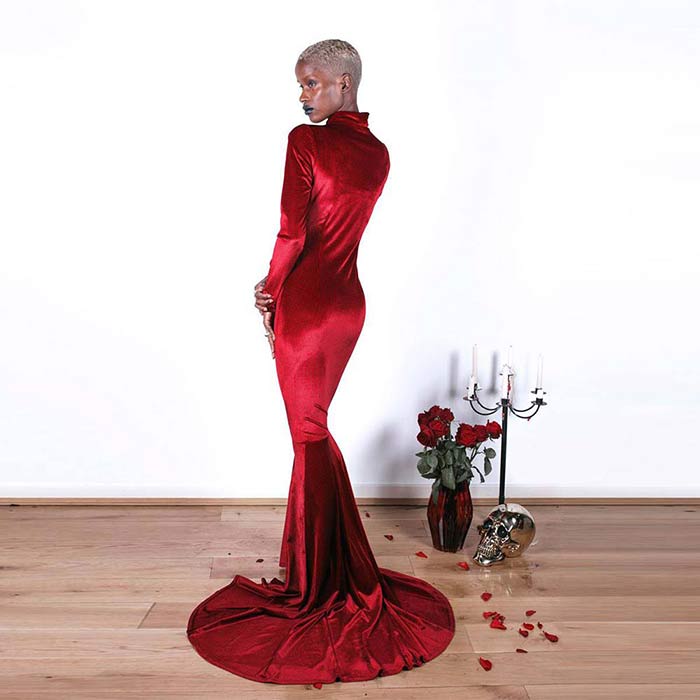
London-based model/singer Misty – The Brand models Church of Sanctus’ now-archived Magdalene Gown. COURTESY OF CHURCH OF SANCTUS.
Do you ever think about scaling up to wholesale? Does that interest you at all?
When I first started the brand, I thought wholesale was a measure of success as it was what people frequently asked me when they learned I had a label: “Where are you stocked?” I tried it for a while but it wasn’t sustainable, making piles of clothes for 40% of the retail price and sending them off to be sold elsewhere. It felt wrong to me and I eventually decided that wholesale wasn’t right for Sanctus, so for now you can only buy it on our website, where we can carefully oversee every step of the process. It’s amazing to have a direct connection with my customers and I intend to keep it that way. Eventually, I’d like to have a flagship store in London but only when the business is ready.
- Lucinda’ Rebirth Coat design in black…. COURTESY OF CHURCH OF SANCTUS.
- …and in ruby. COURTESY OF CHURCH OF SANCTUS.
